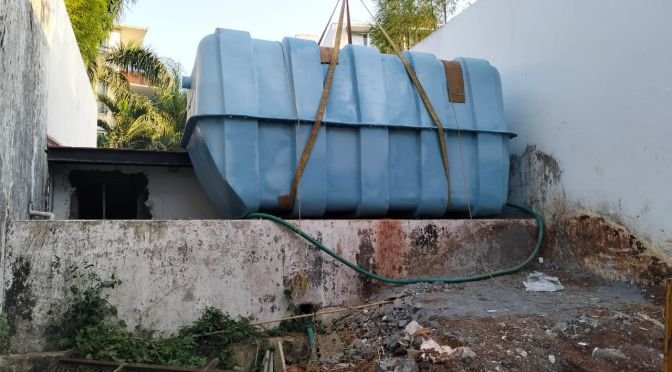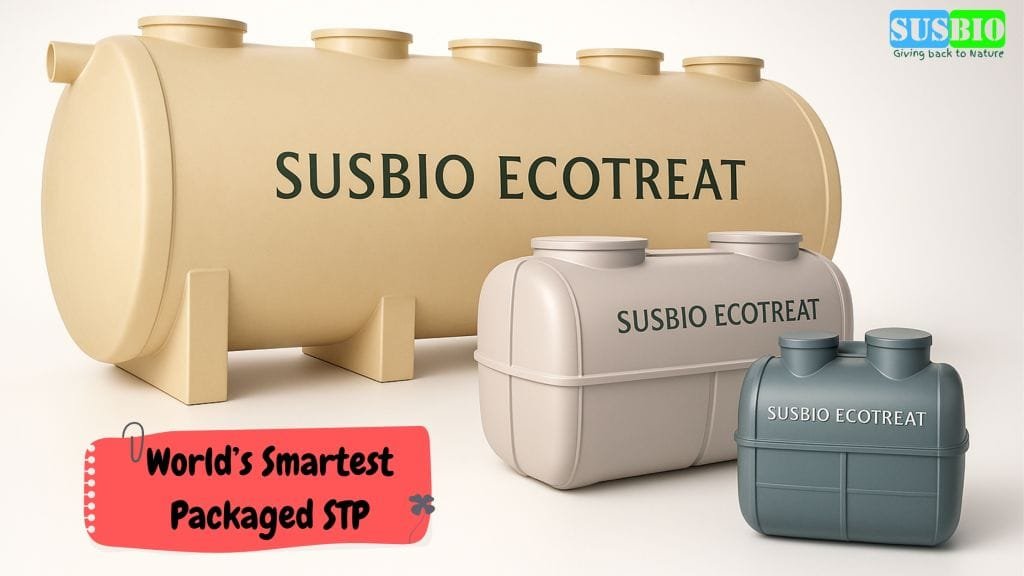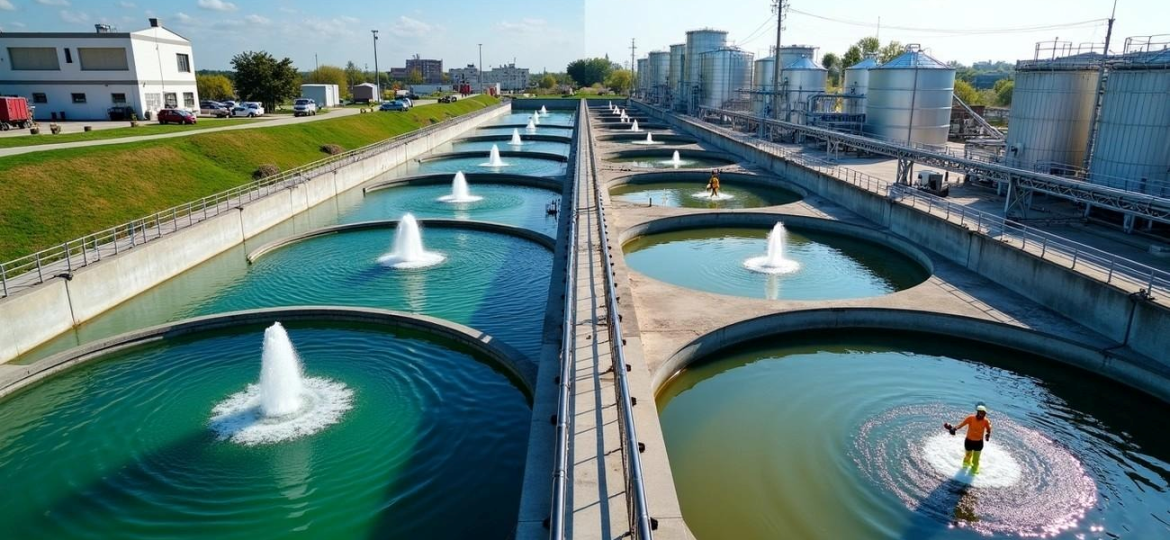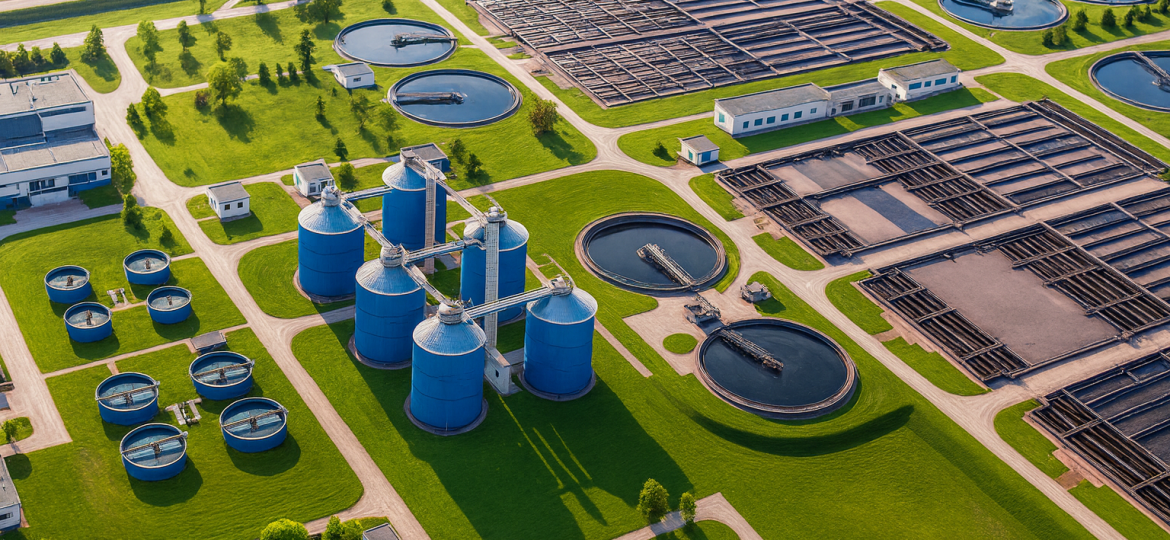In the field of advanced wastewater treatment, choosing the right technology is critical for ensuring efficiency, cost-effectiveness, and compliance with environmental standards. Two prominent technologies used today are the Moving Bed Biofilm Reactor (MBBR) and SUSBIO ECOTREAT. While both systems are designed to treat wastewater, they have different features, advantages, and applications. This blog will provide a detailed comparison of these two technologies, highlighting why SUSBIO ECOTREAT stands out as the superior choice for a wide range of applications, including packaged sewage treatment plants and prefab STP systems.
Understanding MBBR Technology

Moving Bed Biofilm Reactor (MBBR) is a popular wastewater treatment technology that relies on biofilm carriers suspended in a reactor. These carriers, typically made from plastic, provide a surface for microorganisms to grow and form biofilms. As wastewater flows through the reactor, the microorganisms on the carriers break down organic matter, reducing the Biological Oxygen Demand (BOD) and Chemical Oxygen Demand (COD) levels.
Key Features of MBBR
Biofilm Carriers
MBBR systems use small, floating biofilm carriers to support the growth of microorganisms. These carriers provide a large surface area for biofilm formation, which enhances the biological wastewater treatment process. The carriers move freely within the reactor, ensuring even distribution of biomass and efficient contact between the wastewater and microorganisms.Aeration System
MBBR requires a robust aeration system to keep the biofilm carriers in suspension and provide oxygen for the aerobic microorganisms. The aeration system is critical for maintaining the proper conditions for microbial growth and effective organic matter degradation.No Sludge Recycling
Unlike other biological water treatment processes, MBBR does not require sludge recycling. This simplifies operation and reduces the risk of sludge bulking, a common problem in conventional activated sludge systems.
Advantages of MBBR
- Compact Footprint: MBBR systems are relatively compact compared to traditional activated sludge processes, making them suitable for sites with limited space.
- High Biomass Concentration: The use of biofilm carriers allows for a high concentration of biomass, which enhances the wastewater treatment efficiency and enables the system to handle higher organic loads.
- Flexibility and Adaptability: MBBR can be easily adapted to different wastewater characteristics and treatment requirements by adjusting the type and number of biofilm carriers.
- Reduced Sludge Production: Due to the efficient biofilm process, MBBR systems typically produce less sludge than conventional biological treatment methods, reducing disposal costs.
Limitations of MBBR
- High Energy Consumption: MBBR systems require significant energy for aeration to keep the biofilm carriers in suspension and provide sufficient oxygen for microbial activity. This can lead to high operational costs.
- Maintenance Requirements: The aeration system and biofilm carriers need regular maintenance to prevent clogging and ensure optimal performance. Failure to maintain these components can result in reduced wastewater treatment efficiency and operational issues.
- Variable Performance: The effectiveness of MBBR can vary depending on wastewater characteristics, particularly in high-strength wastewater applications. In some cases, additional treatment processes may be required to achieve desired effluent quality.
MBBR vs. SUSBIO EcoTreat: A Comparative Analysis
In this section, we’ll compare the stp mbbr process (Moving Bed Biofilm Reactor) with SUSBIO EcoTreat, focusing on cost, efficiency, and environmental impact to help you make the right choice for wastewater treatment.
Cost-Effectiveness Comparison
- MBBR: Lower initial setup cost but higher long-term operational costs due to maintenance, energy consumption, and chemical use.
- SUSBIO EcoTreat: Higher upfront cost, but more energy-efficient with reduced chemical dependency, leading to lower operational and maintenance costs over time.
Verdict: SUSBIO EcoTreat is more cost-effective in the long run despite its higher initial investment.
Efficiency in Wastewater Treatment
- MBBR: Efficient for organic pollutants like BOD and COD but struggles with complex wastewater.
- SUSBIO EcoTreat: Outperforms MBBR in removing both organic and inorganic contaminants and handles varying wastewater loads better.
Verdict: SUSBIO EcoTreat delivers superior treatment efficiency and scalability, especially for large-scale systems.
Environmental Impact
- MBBR: Higher energy consumption and chemical usage contribute to a larger environmental footprint.
- SUSBIO EcoTreat: More energy-efficient and eco-friendly, using fewer chemicals and reducing carbon footprint.
Verdict: SUSBIO EcoTreat is the more sustainable option with lower energy and chemical usage.
Conclusion: MBBR vs. SUSBIO EcoTreat
- MBBR is suitable for small and medium-sized STP systems with budget constraints.
- SUSBIO EcoTreat is a high-performance, scalable solution for large-scale STPs, offering long-term savings, efficiency, and sustainability.
Final Thoughts: For projects prioritizing long-term savings, energy efficiency, and eco-friendly solutions, SUSBIO EcoTreat is the clear winner.
Limitations of MBBR Technology for STP
- Clogging and Maintenance Issues
MBBR systems rely on biofilm carriers that can clog over time, reducing efficiency and increasing maintenance needs. Periodic replacement of biofilm carriers adds to operational costs. - High Energy Consumption
MBBR technology for STP requires significant energy for aeration and carrier movement. For large systems, this can become a major operational cost, especially in regions with high energy prices. - Limited Effectiveness for Complex Wastewater
While MBBR is efficient for organic waste, it struggles with high-toxic or non-biodegradable pollutants. Additional treatment processes may be required for complex wastewater. - Space Requirements for Larger Systems
Large-scale MBBR setups still need substantial space, which can be a constraint in areas with limited land or when space optimization is crucial. - Biofilm Detachment
Biofilm detachment can occur under fluctuating conditions, reducing microbial activity and compromising treatment performance. - High Initial Setup Costs
Though cost-effective in the long run, the initial investment for MBBR technology for STP, including reactor construction and biofilm carriers, can be higher than traditional systems. - Vulnerability to Shocks
MBBR systems can be sensitive to sudden changes in influent quality, such as shock loads or contaminant fluctuations, which can affect performance. - Limited Removal of Nitrogen and Phosphorus
MBBR is not as effective in removing nitrogen and phosphorus. Additional processes may be needed to treat these pollutants.
Challenges of Implementing MBBR Technology in STP
MBBR (Moving Bed Biofilm Reactor) technology, while effective in many sewage treatment plants (STPs), presents certain challenges during implementation. Here’s a summary of the key obstacles:
- High Initial Capital Investment: Setting up MBBR systems, including reactors and biofilm carriers, can be costly, limiting its adoption in areas with budget constraints.
- Space Requirements: Large-scale MBBR installations need considerable space, which can be problematic in urban areas or locations with limited land availability.
- Maintenance of Biofilm Carriers: Biofilm carriers can clog or foul over time, requiring regular cleaning or replacement, adding to operational costs.
- High Energy Consumption: MBBR systems demand substantial energy for aeration and biofilm carrier movement, increasing operational costs, especially in large STPs.
- Performance Under Shock Loads: MBBR systems can struggle to handle sudden increases in pollutant levels, reducing treatment efficiency.
- Limited Removal of Nitrogen & Phosphorus: MBBR is less effective in removing nitrogen and phosphorus, requiring additional processes for full nutrient removal.
- Biofilm Detachment: Improper maintenance can lead to biofilm detachment, affecting microbial activity and treatment efficiency.
- Operator Training Needs: MBBR systems require skilled operators, which can be a challenge where technical expertise is limited.
Conclusion: While MBBR offers several advantages, understanding and addressing these challenges are key to its successful implementation in STPs. Proper planning, training, and maintenance are essential to optimize performance.
Understanding SUSBIO ECOTREAT

SUSBIO ECOTREAT is an advanced, prefabricated sewage treatment plant developed by SUSBIO, a leading provider of innovative wastewater treatment solutions. This system combines multiple wastewater treatment processes in a single, compact unit, delivering superior performance and cost-efficiency. SUSBIO ECOTREAT is designed to handle a wide range of wastewater types, from domestic to industrial, making it a versatile solution for various applications.
Key Features of SUSBIO ECOTREAT
Dual-Treatment Process
SUSBIO ECOTREAT utilizes a dual-treatment process that combines both aerobic and anaerobic biological treatments. This innovative approach ensures efficient removal of organic matter and nutrients, achieving high levels of treatment even in challenging conditions.High-Quality Construction
The system is constructed from fiber-reinforced plastic (FRP), which provides exceptional structural strength and durability. This robust construction ensures a long lifespan and reduces maintenance needs, making SUSBIO ECOTREAT a reliable choice for sewage treatment plants.Energy-Efficient Design
SUSBIO ECOTREAT is engineered for energy efficiency, with optimized aeration and circulation systems that minimize power consumption. This not only reduces operational costs but also enhances the environmental sustainability of the wastewater treatment process.Compact and Modular Design
The prefabricated, modular design of SUSBIO ECOTREAT allows for easy installation and scalability. The compact footprint makes it ideal for sites with limited space, while the modular components can be tailored to meet specific treatment requirements. This flexibility is particularly beneficial for projects needing a prefab STP solution.
Advantages of SUSBIO ECOTREAT
- Superior Treatment Efficiency: The dual-treatment process effectively removes organic matter, nutrients, and other pollutants, achieving high effluent quality that meets stringent environmental standards.
- Durability and Longevity: The use of high-quality FRP ensures that SUSBIO ECOTREAT is resistant to corrosion and other forms of degradation, providing a long-lasting solution with minimal maintenance requirements.
- Cost-Effectiveness: Although the initial investment may be higher, the reduced energy consumption, lower maintenance costs, and extended lifespan of SUSBIO ECOTREAT result in significant long-term savings.
- Easy Installation and Maintenance: The prefabricated design allows for quick installation with minimal disruption, while the modular components simplify maintenance and reduce downtime.
Why SUSBIO ECOTREAT is the Best Choice
While MBBR offers certain advantages in terms of compactness and flexibility, SUSBIO ECOTREAT provides a more comprehensive solution for wastewater treatment. Its dual-treatment process, superior construction quality, and energy-efficient design deliver unmatched performance and cost-effectiveness, particularly in high-strength wastewater applications.
Moreover, the easy installation, low maintenance requirements, and adaptability of SUSBIO ECOTREAT make it the ideal choice for various settings, from residential complexes to industrial facilities. By choosing SUSBIO ECOTREAT, you are investing in a sustainable, reliable, and efficient wastewater treatment solution that will serve your needs for years to come.
Conclusion
Selecting the right wastewater treatment system is crucial for ensuring effective, sustainable, and cost-efficient operations. While MBBR technology has its merits, SUSBIO ECOTREAT stands out as the superior choice due to its advanced dual-treatment process, robust construction, energy efficiency, and versatility. For those seeking a reliable and high-performing solution, SUSBIO ECOTREAT offers unparalleled advantages, making it the best choice for modern water treatment and wastewater treatment needs. Whether you are looking for a packaged sewage treatment plant or prefab STP, SUSBIO ECOTREAT is the optimal solution for achieving superior sewage treatment performance and efficiency.






